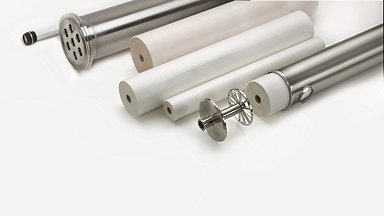Recover and reuse water
Using filtration, excess water from processes such as milk concentration for milk powder or fruit concentration for foods and beverages can be treated to a quality that allows it to be reused in food processes.
Flush water, sometimes known as white water, can be purified by filtration for reuse in the process – either for cleaning or in the product itself. Solids from this water, such as milk or juice, can also be separated by filtration for reprocessing, where practicable.
Similarly, single-use caustic solution from hot processes can be recovered and reused.
Watch the videos below to find out how two of our customers are reducing their environmental load and saving money while doing it.
Dairygold recovers up to 90% of caustic soda and saves water
Dairygold, one of Ireland’s leading dairy companies, has focused on making its production more efficient and sustainable for several years. Filtration technology allows them to recover up to 90% of the caustic soda used for CIP. In this video, they will show you how they reduce chemical as well as water consumption significantly — and so reduce costs.

Making the most of whey
Our filtration unit makes a big difference to European cheese producer Mammen Dairies’ bottom line – and to their environmental footprint, as it reduces the daily tap water intake significantly as well as the number of truckloads of whey protein they need to transport. The annual transportation savings amount to 150 tons of diesel and 460,000 km on the road.
Making the most of whey
Our filtration unit makes a big difference to European cheese producer Mammen Dairies’ bottom line – and to their environmental footprint, as it reduces the daily tap water intake significantly as well as the number of truckloads of whey protein they need to transport. The annual transportation savings amount to 150 tons of diesel and 460,000 km on the road.
Uses

Product recovery
Lower costs through reuse

Condensate water recovery in evaporation
Cost savings possible

Lower caustic solution consumption
Recovery of cleaning chemicals
Technologies

Highest purification standard
Reverse osmosis

Ion and mineral removal







